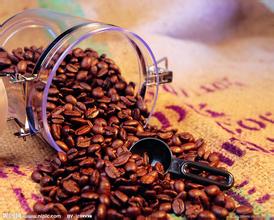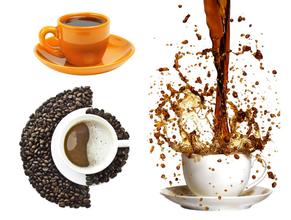| | Coffee bean blending method, proportion and points for attention |
The method of making comprehensive coffee
"Mocha has a high-quality sour taste, with this and that taste" is not enough. Indeed, mocha is called sour coffee, but it is limited to a certain degree of roasting to give it a rich sour taste and aroma, not at any degree of roasting.
In other words, "the light-baked mocha tastes like this, but the medium-and deep-baked mocha tastes like that." this is the first time that the taste of mocha beans has been defined by the degree of roasting. The influence of the name of origin on the taste of coffee is still far behind. We have been trapped by the name of origin like "Mochagilimanjaro" for too long. The impact of roasting degree on coffee is much greater than the name of origin. First of all, it is necessary to have such an understanding in order to understand the next comprehensive coffee production methods.
Comprehensive coffee has a variety of production methods, it can be said that how many integrated coffee makers exist, there are as many ways of making it. Mixed coffee can challenge unlimited flavor creativity. The following are the basic principles of comprehensive coffee making for beginners.
1 the baking degree is the same
2 based on proportional combination
3 mix only three or four kinds of coffee beans
Mixed coffee with the same roasting degree
As stated in principle 1, the roasting degree of mixed coffee should be as consistent as possible. It has also been suggested that inconsistent roasting degrees can make coffee feel more layered, but beginners should first put their efforts into uniform roasting. It takes a lot of time and effort and technology to unify the colors of several coffee beans. To advance difficult techniques, you can learn to stop baking correctly.
The real value of mixed coffee lies in the "beauty of blending". Each coffee individual does not necessarily match each other in the first place.
Stop baking at the best time, and the beans may still look the same color, but if you look closely, you will find inconsistencies. The difference in the baking stop time of just a few seconds can make a slight difference in the baking degree.
But as long as the baking stop time is within the optimal time zone, there is no need to pay attention to the subtle baking differences of each bean. In other words, individual coffee is not made from different kinds of beans, but from the same kind of beans with slightly different roasting degrees.
In this way, we can understand how difficult it is to have the same baking degree. Small errors can become big errors together; different baking degrees will also have an impact on the extraction speed. The result is coffee with an incongruous taste.
The basis of making comprehensive coffee is proportional combination.
After the baking degree is unified, the next step is the "proportional combination". Each kind of coffee is derived from a proportional combination.
Forget the complex blending ratio and use proportional combinations for each kind of beans, because the beans are all in the same proportion, can be combined freely, and the taste fine-tuning becomes quite simple, which is the advantage of proportional coffee beans.
Comprehensive coffee uses an equal proportion of combinations, but sometimes coffee beans are different between the old and the new. just like soba noodles, when he comes to autumn, he will replace all his coffee with freshly harvested buckwheat, so why not replace all his coffee with fresh raw beans? This is because even if it is the same coffee belt, the harvest time at the north and south of the equator is different, and sometimes the new beans have been available several months later because of the inventory adjustment in the production country.
The taste of new beans is wild and strong, and the taste is quite obvious when it is made into comprehensive coffee, so it should be double-roasted to lighten the taste and reconcile with other beans.
The advantage of mixed coffee is that it has a stable taste (the taste of individual coffee changes from year to year), but for minor adjustments, you can refer to the following order:
1 change the baking degree
2 double baking
3 change the proportion of the combination
4 change the origin of coffee beans
5 change the extraction method
The main purpose of 1 is to adjust the sour and bitter taste (light baking is sour, deep baking is bitter), and 2 is to remove astringency and reduce overly prominent taste. Adjust the taste to 1 is the most effective, just slightly change the baking in the best baking time band, the taste will make a big difference. If changing 1 and 2 is not enough, try changing the proportion of coffee beans. If the coffee is in an equal proportion, it can be easily adjusted.
If it still doesn't work, change the origin of the coffee, though, you can't just change a kind of coffee beans; if you replace type A Panama with a type D Kenya, the whole cup of coffee will taste worse.
The last step is to change the extraction method. Adjust the taste of coffee by changing the grinding method of coffee beans, water temperature and water volume.
There should be three or four kinds of beans for mixed coffee.
It is important to limit the variety of beans to three or four. There was a time when Manning with mocha, Brazil with Mexico, this kind of mixed coffee made from two kinds of coffee beans. This combination is not conducive to taste reproduction.
If only two kinds of beans are used in proportional combination, each kind of bean will play 50% of its personality, but if one of the beans is inferior, the chance of blending will be as high as 50%. With three combinations, the probability is 33%, and four is 25%, which means that the more beans you make, the lower the risk of failure, and the more stable the coffee flavor. On the other hand, if there are too many kinds of beans, the taste of coffee will become thin and lack personality; as a result, the purpose of making mixed coffee will lose the meaning of creating a new flavor. So the conclusion is that you can choose three or four kinds of beans.

Important Notice :
前街咖啡 FrontStreet Coffee has moved to new addredd:
FrontStreet Coffee Address: 315,Donghua East Road,GuangZhou
Tel:020 38364473
- Prev

Popularization of professional coffee knowledge | what is honey treatment?
Let's analyze each method of raw bean treatment one by one: 1. Natural solarization (Natural/Dried-in-the-Fruit): the process of this method is the simplest. The fruit begins the process of sun drying without treatment after picking. This is the oldest method of treatment in existence. This method is still used in places such as Ethiopia and Brazil. The natural solarization method is used in
- Next

Introduction to Coffee knowledge-- understanding Coffee Machine
Features: the brewed coffee has good aroma and high mellowness. Corresponding coffee beans: non-heavily roasted single coffee beans and mixed coffee beans, such as Blue Mountain, Colombia, Brazil, etc. Adapt to the crowd: people who pursue the quality of coffee, are not afraid of the trouble of washing pots, and are full of the spirit of continuous exploration. Preparation materials: 1, the right amount of pure water; you can use the kind of pure water used in household drinking fountains
Related
- Beginners will see the "Coffee pull flower" guide!
- What is the difference between ice blog purified milk and ordinary milk coffee?
- Why is the Philippines the largest producer of crops in Liberia?
- For coffee extraction, should the fine powder be retained?
- How does extracted espresso fill pressed powder? How much strength does it take to press the powder?
- How to make jasmine cold extract coffee? Is the jasmine + latte good?
- Will this little toy really make the coffee taste better? How does Lily Drip affect coffee extraction?
- Will the action of slapping the filter cup also affect coffee extraction?
- What's the difference between powder-to-water ratio and powder-to-liquid ratio?
- What is the Ethiopian local species? What does it have to do with Heirloom native species?

